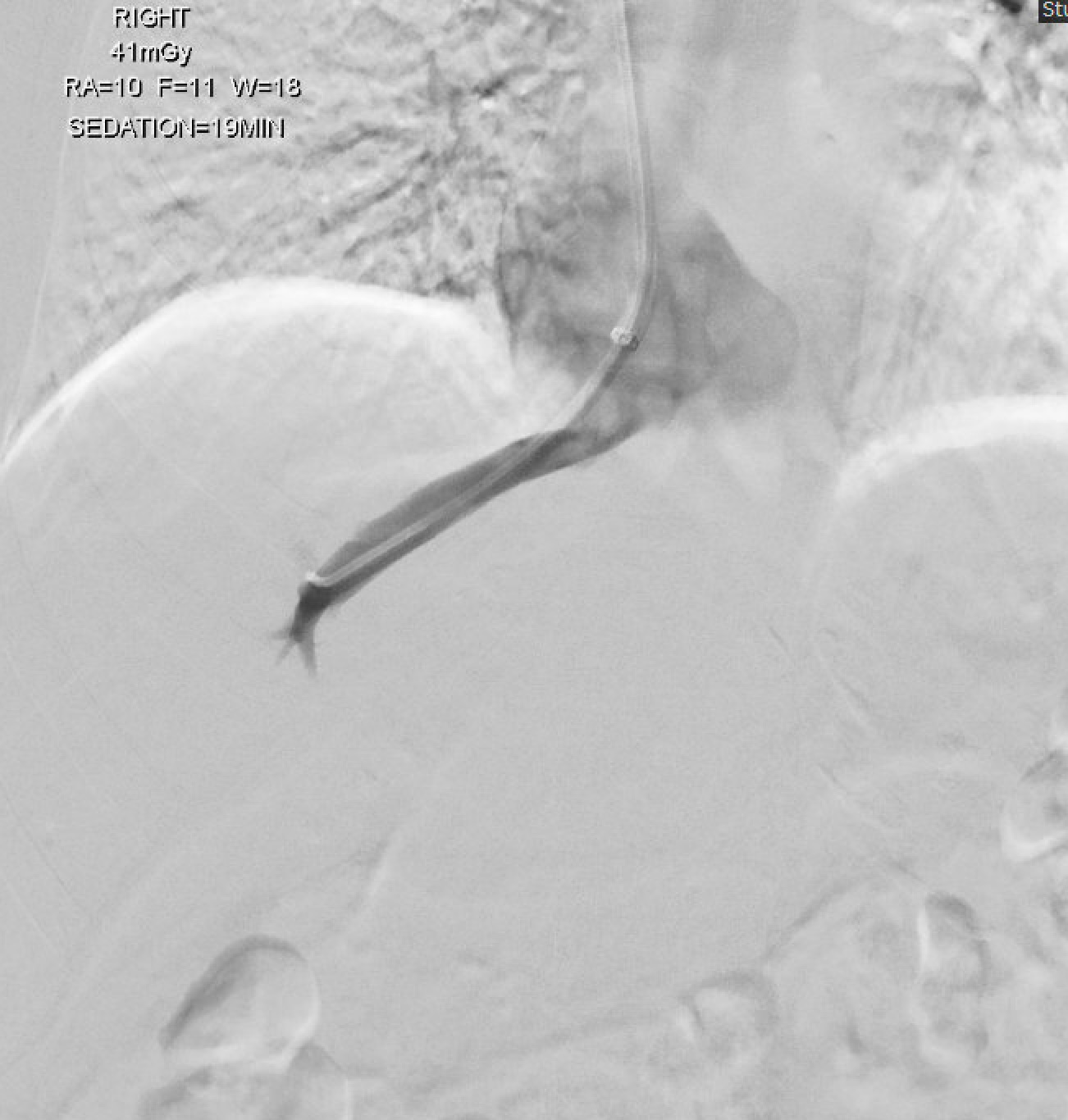Sunday Poster Session
Category: Liver
P1704 - Unmasking Herbal Hepatotoxicity: Severe Drug-Induced Liver Injury with Autoimmune Features Following Black Cohosh Exposure
Sunday, October 26, 2025
3:30 PM - 7:00 PM PDT
Location: Exhibit Hall

Dayoung Jeon, MD
Houston Methodist Hospital
Houston, TX
Presenting Author(s)
Dayoung Jeon, MD1, Nandini Ray, MD1, Ahmad Afzal, MD1, Rabia Rizwan, MD1, Ronan Allencherril, MD1, Michelle Jones-Pauley, MD1, Tamneet Basra, MD2, David Victor, MD3, Sudha Kodali, MD1, Sadhna Dhingra, MD1
1Houston Methodist Hospital, Houston, TX; 2Houston Methodist, Houston, TX; 3Houston Medical Center, Houston, TX
Introduction: Drug-induced liver injury (DILI) is a leading cause of abnormal liver function tests and acute liver failure in the United States. DILI can result from prescription medications, over-the-counter drugs, or herbal supplements, and often mimics other liver diseases, making diagnosis challenging. Clinical presentations range from asymptomatic enzyme elevations to jaundice, pruritus, fatigue, and abdominal pain. Laboratory findings typically reveal elevated aminotransferases and bilirubin; severe cases may show impaired coagulation. DILI is classified as intrinsic or idiosyncratic. Risk factors include older age, pre-existing liver disease, alcohol use, genetics, and polypharmacy. Management centers on discontinuing the offending agent and supportive care, with specialist referral for severe presentations. A thorough medication and supplement history is essential for diagnosis.
Case Description/
Methods: A 58-year-old woman with Hashimoto thyroiditis and asthma presented with severe transaminitis after returning from Egypt, where she had cataract surgery. She developed jaundice postoperatively and was hospitalized abroad, with bilirubin peaking at 32 mg/dL and AST/ALT >2500 IU/L. She denied viral symptoms, new medications, acetaminophen, antibiotics, supplements, or alcohol use. On arrival, her LFTs remained elevated. Workup for viral, autoimmune, and metabolic causes was negative; imaging showed hepatic steatosis. Coagulation studies revealed signs of liver regeneration. Transjugular liver biopsy showed severe hepatitis with plasma cell clusters and granulomas, suggestive of DILI with atypical autoimmune features. The patient later recalled possible use of herbal remedies, including black cohosh. She was managed with continuous NAC, ursodiol, steroids, and vitamin K for coagulopathy. Her LFTs improved, and she was discharged on a steroid taper and supportive care.
Discussion: This case highlights the importance of considering herbal supplement–induced DILI in patients with acute hepatitis of unclear etiology. Black cohosh, though rarely, has been associated with severe hepatotoxicity. Management relies on prompt withdrawal of the suspected agent, supportive care, and, in cases with autoimmune features, corticosteroids. NAC may benefit non-acetaminophen acute liver failure. Early liver biopsy and a detailed history are essential for diagnosis and guiding therapy. Vigilance regarding herbal and alternative medicine use is critical for clinicians evaluating acute liver injury.

Figure: An ultrasound image of a transjugular biopsy
Disclosures:
Dayoung Jeon indicated no relevant financial relationships.
Nandini Ray indicated no relevant financial relationships.
Ahmad Afzal indicated no relevant financial relationships.
Rabia Rizwan indicated no relevant financial relationships.
Ronan Allencherril indicated no relevant financial relationships.
Michelle Jones-Pauley indicated no relevant financial relationships.
Tamneet Basra indicated no relevant financial relationships.
David Victor indicated no relevant financial relationships.
Sudha Kodali: ASTRAZENECA – Advisory Committee/Board Member. GILEAD – Advisor or Review Panel Member, Advisory Committee/Board Member, Speakers Bureau. SIRTEX – Advisor or Review Panel Member.
Sadhna Dhingra indicated no relevant financial relationships.
Dayoung Jeon, MD1, Nandini Ray, MD1, Ahmad Afzal, MD1, Rabia Rizwan, MD1, Ronan Allencherril, MD1, Michelle Jones-Pauley, MD1, Tamneet Basra, MD2, David Victor, MD3, Sudha Kodali, MD1, Sadhna Dhingra, MD1. P1704 - Unmasking Herbal Hepatotoxicity: Severe Drug-Induced Liver Injury with Autoimmune Features Following Black Cohosh Exposure, ACG 2025 Annual Scientific Meeting Abstracts. Phoenix, AZ: American College of Gastroenterology.
1Houston Methodist Hospital, Houston, TX; 2Houston Methodist, Houston, TX; 3Houston Medical Center, Houston, TX
Introduction: Drug-induced liver injury (DILI) is a leading cause of abnormal liver function tests and acute liver failure in the United States. DILI can result from prescription medications, over-the-counter drugs, or herbal supplements, and often mimics other liver diseases, making diagnosis challenging. Clinical presentations range from asymptomatic enzyme elevations to jaundice, pruritus, fatigue, and abdominal pain. Laboratory findings typically reveal elevated aminotransferases and bilirubin; severe cases may show impaired coagulation. DILI is classified as intrinsic or idiosyncratic. Risk factors include older age, pre-existing liver disease, alcohol use, genetics, and polypharmacy. Management centers on discontinuing the offending agent and supportive care, with specialist referral for severe presentations. A thorough medication and supplement history is essential for diagnosis.
Case Description/
Methods: A 58-year-old woman with Hashimoto thyroiditis and asthma presented with severe transaminitis after returning from Egypt, where she had cataract surgery. She developed jaundice postoperatively and was hospitalized abroad, with bilirubin peaking at 32 mg/dL and AST/ALT >2500 IU/L. She denied viral symptoms, new medications, acetaminophen, antibiotics, supplements, or alcohol use. On arrival, her LFTs remained elevated. Workup for viral, autoimmune, and metabolic causes was negative; imaging showed hepatic steatosis. Coagulation studies revealed signs of liver regeneration. Transjugular liver biopsy showed severe hepatitis with plasma cell clusters and granulomas, suggestive of DILI with atypical autoimmune features. The patient later recalled possible use of herbal remedies, including black cohosh. She was managed with continuous NAC, ursodiol, steroids, and vitamin K for coagulopathy. Her LFTs improved, and she was discharged on a steroid taper and supportive care.
Discussion: This case highlights the importance of considering herbal supplement–induced DILI in patients with acute hepatitis of unclear etiology. Black cohosh, though rarely, has been associated with severe hepatotoxicity. Management relies on prompt withdrawal of the suspected agent, supportive care, and, in cases with autoimmune features, corticosteroids. NAC may benefit non-acetaminophen acute liver failure. Early liver biopsy and a detailed history are essential for diagnosis and guiding therapy. Vigilance regarding herbal and alternative medicine use is critical for clinicians evaluating acute liver injury.

Figure: An ultrasound image of a transjugular biopsy
Disclosures:
Dayoung Jeon indicated no relevant financial relationships.
Nandini Ray indicated no relevant financial relationships.
Ahmad Afzal indicated no relevant financial relationships.
Rabia Rizwan indicated no relevant financial relationships.
Ronan Allencherril indicated no relevant financial relationships.
Michelle Jones-Pauley indicated no relevant financial relationships.
Tamneet Basra indicated no relevant financial relationships.
David Victor indicated no relevant financial relationships.
Sudha Kodali: ASTRAZENECA – Advisory Committee/Board Member. GILEAD – Advisor or Review Panel Member, Advisory Committee/Board Member, Speakers Bureau. SIRTEX – Advisor or Review Panel Member.
Sadhna Dhingra indicated no relevant financial relationships.
Dayoung Jeon, MD1, Nandini Ray, MD1, Ahmad Afzal, MD1, Rabia Rizwan, MD1, Ronan Allencherril, MD1, Michelle Jones-Pauley, MD1, Tamneet Basra, MD2, David Victor, MD3, Sudha Kodali, MD1, Sadhna Dhingra, MD1. P1704 - Unmasking Herbal Hepatotoxicity: Severe Drug-Induced Liver Injury with Autoimmune Features Following Black Cohosh Exposure, ACG 2025 Annual Scientific Meeting Abstracts. Phoenix, AZ: American College of Gastroenterology.
